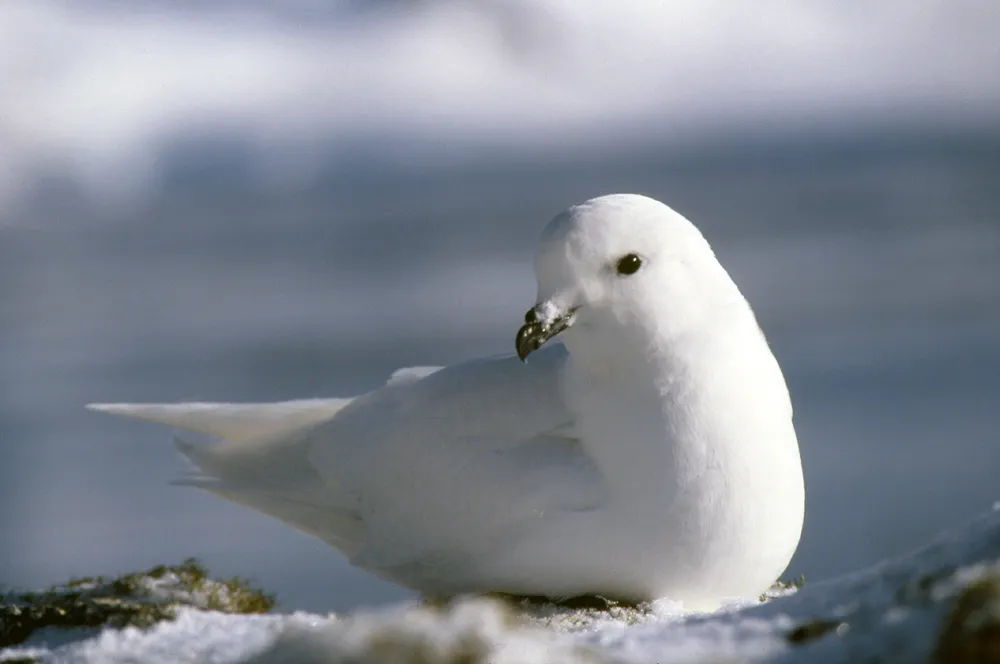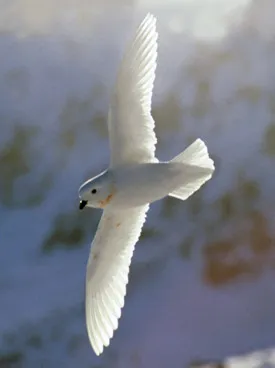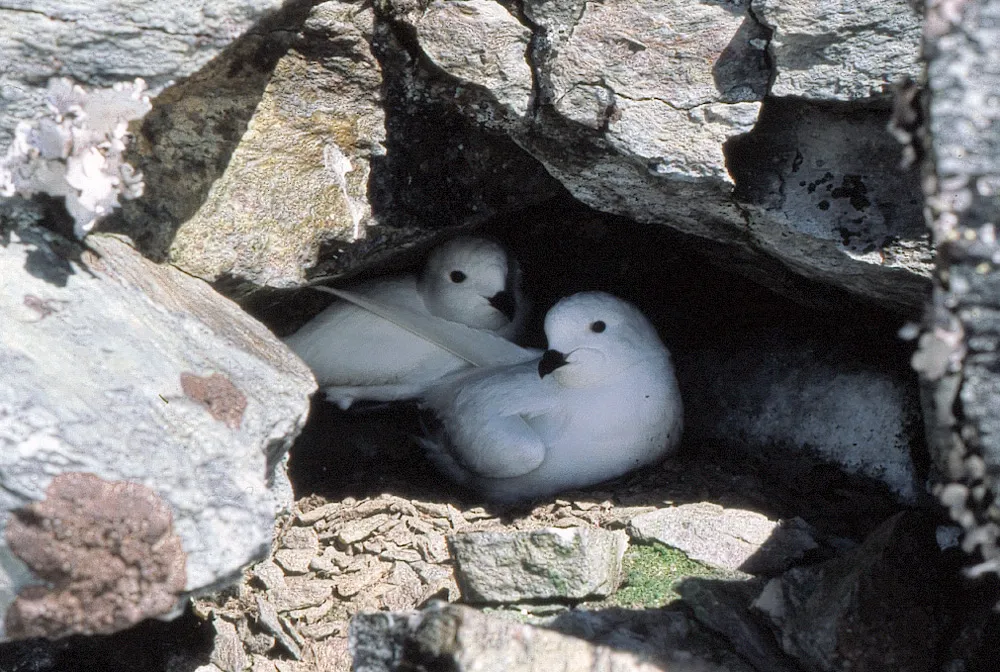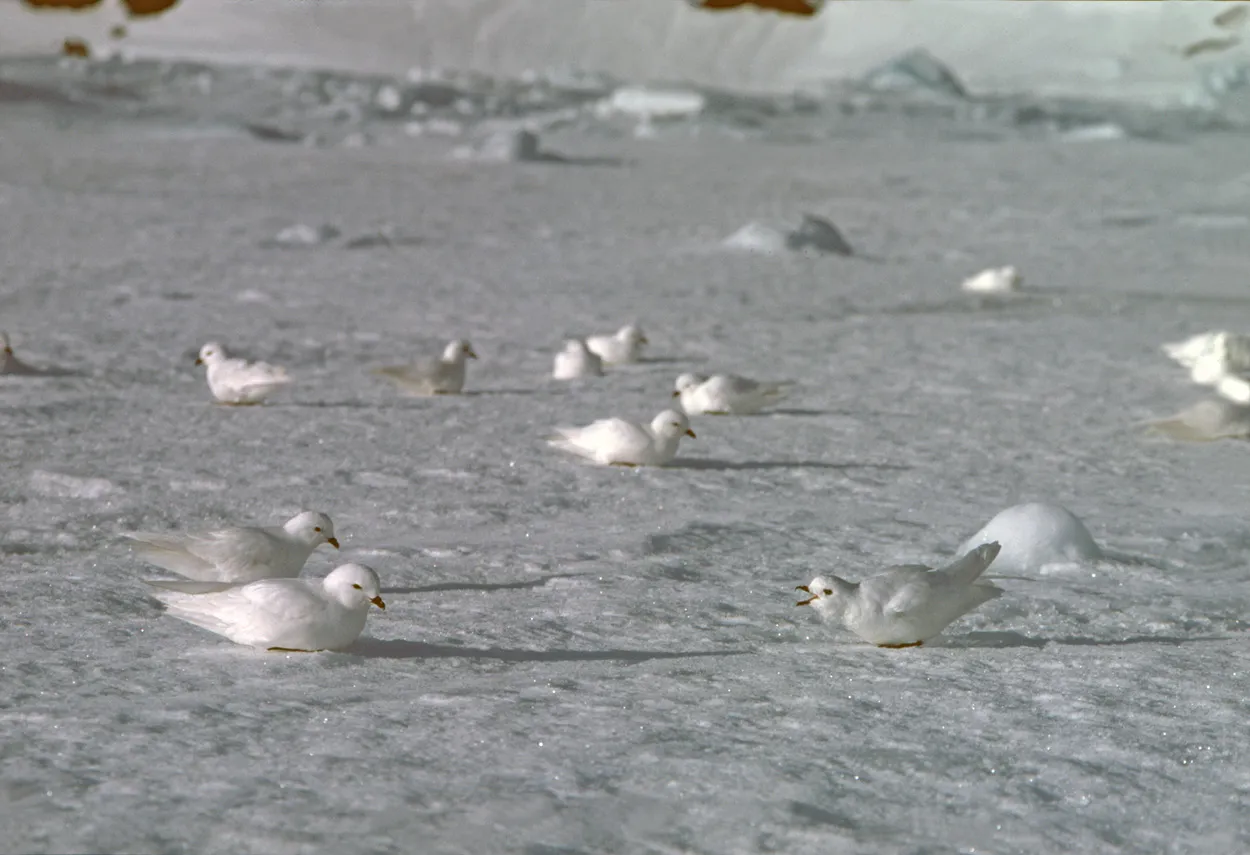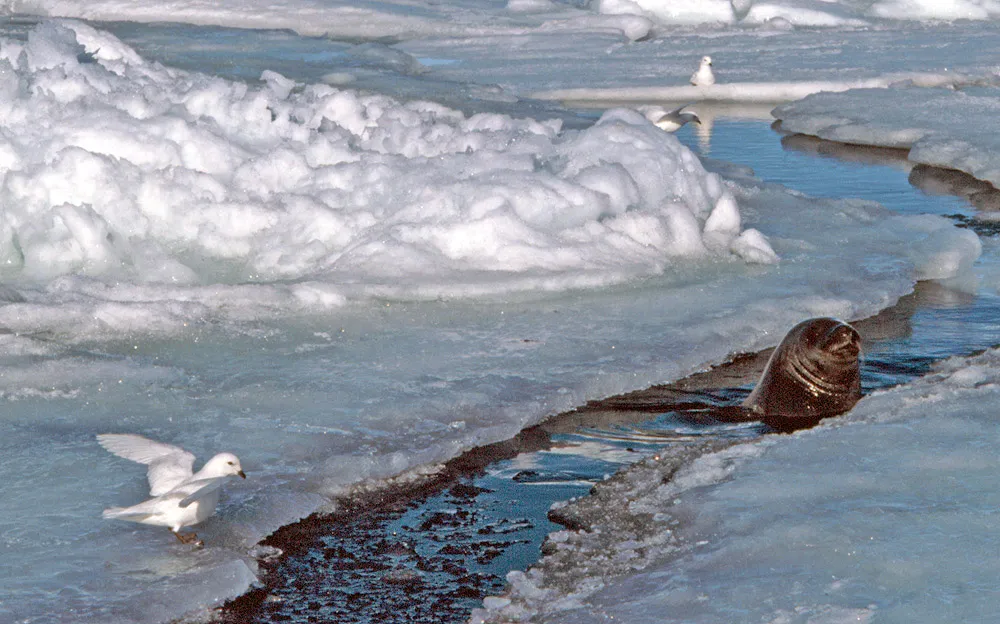Snow Petrels - Pagadroma nivea
Snow petrels are pure white birds with jet black beaks and eyes. They are the size of a pigeon and arguably the most beautiful of all the Antarctic birds.
Snow Petrel facts - Basics
Weight: 240 to 460g, it is a characteristic
of snow petrels that there can be a large range of sizes
amongst individuals.
Length: 30
- 40 cm, wingspan: 75 - 95 cm
Breeding Season: Nests are made and eggs
laid from October to November, the chicks fledge and leave
the nest 41 - 45 days later, snow petrels can live for up
to 20 years.
Estimated world population:
- More than 4,000,000 individuals.
Feeding
& diet: A varied seafood diet of krill, fish and
squid that are usually taken very close to the surface,
though shallow dives are also undertaken. They will also
feed on carrion where it is available.
Conservation
status: Least concern.
Distribution:
Circumpolar, usually found near to pack ice and even continuous
ice as long as there are open water leads to feed at. Breeds
mainly on the Antarctic continent and surrounding islands,
it is the most southerly breeding bird species, breeding
even further south than the Emperor penguin. Snow petrel
have even been seen at the south pole.
Predators:
Antarctic (south polar) skuas, though weather conditions
especially snow blocking nesting sites cause much greater
loss of eggs and chicks.
What are snow petrels like?
In their appearance and behaviour snow petrels symbolize the very essence of the deep south. They are the purest of white and despite their diminutive size are as tough as animal needs to be to survive and even thrive in low temperatures with Antarctica's constant wind. They are frequently encountered in their hundreds, rarely in thousands, they tend to be spread out over a wide nesting area rather than being close together in large discrete colonies as are other Antarctic species.
They feed largely on krill and must always be near to the sea in order to feed. They are found therefore particularly along coasts and along the Antarctic peninsula.
The flying pair of birds in the picture are are a courting couple. In the Antarctic spring the males go looking for mates, and the females put them through their paces to assess their suitability and tenacity.The courtship ritual consists initially of a male snow petrel following a female as she flies around the nesting area which is frequently a rocky outcrop or cliff with suitable ledges or nest holes. The female then leads him around the cliffs in a high speed aerial ballet, climbing and diving, flying almost into the cliff face at full speed before changing direction with an imperceptible twist of the wing at the last moment.
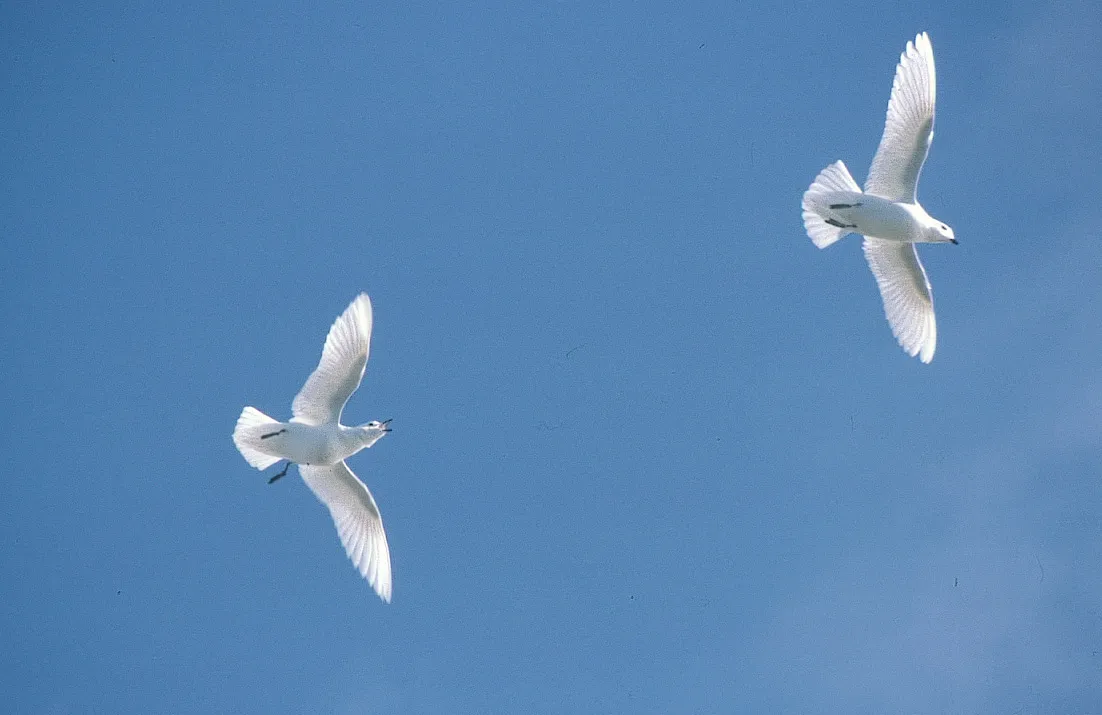 The poor beleaguered male not only has to match this
aeronautical master class, but he has to do it as close as possible
to the female and without a script, gauging her every move while
proving himself her equal at rapid flying. Many would be suitors
seem to give up and get left behind, certainly in the early
days. In this picture the male is calling to the female during
a relatively relaxed moment.
The poor beleaguered male not only has to match this
aeronautical master class, but he has to do it as close as possible
to the female and without a script, gauging her every move while
proving himself her equal at rapid flying. Many would be suitors
seem to give up and get left behind, certainly in the early
days. In this picture the male is calling to the female during
a relatively relaxed moment.
Photographing flying snow petrels requires a lens on fixed focus, bright light, fast shutter, small aperture, and much cursing. Even then, it all happens so quickly that you don't really know what you've got until you can look at the picture on a bigger screen.
Why are these snow petrels hiding down a hole?
Unusually for Antarctic birds, snow petrels seem to apply some thought to the practicalities of a nest site. This pair are at the entrance to their nest which has been made in a natural crevice amongst some large fractured rocks. This is a frequent choice for a nest site though not always available or in plentiful supply as snow petrels nest very far south and such crevices are frequently snowed or iced up.
Attempting to approach a nest (as I did on many occasions when helping in a long term programme on nesting success) brings out the worst in snow petrels. A well aimed stream of foul smelling, bright pink, oily, semi-digested krill mixed with oily stomach secretions would come in your direction as their (admirably unpleasant) projectile vomiting defence mechanism. As small birds, nesting in crevices gets them out of the wind so reducing their risk of chilling in the wind and also protects them from nest raiding birds such as skuas. Antarctic has no land based nest raiding mammals such as cats or rats.
Snow petrels have been known to nest far inland on the Antarctic continent, 325 km. from the nearest sea that they must travel to in order to feed. They must nest on rock and in these cases choose "nunataks" isolated outcrops of tall rock ridges and mountains that protrude above the surrounding ice from the bed rock.
Isn't it cold and windy sitting out on the sea ice?
Snow petrels are birds of the Antarctic, they don't migrate as such but move further north in winter as the cold weather sets in. Research in recent years has shown that the Antarctic ocean beneath the winter ice is surprisingly rich in life - a fact that it seems these birds have known about for some time.
They frequently arrive surprisingly far south in the winter in ridiculously low temperatures and high winds for such small creatures and rest overnight on totally exposed sea-ice, as here. Any spring and summer shelter is blocked up by now by blown snow. The reason they venture south in such adverse conditions would seem to be in order to take advantage of the abundance beneath the ice and the relative rarity of summer competitors.
Why are these snow petrels by the edge of this tide crack?
That these birds are prepared to undergo so much to find their food is testament to the nutritional value of that food - krill. Here snow petrels (and in the first photograph a crabeater seal too) are taking advantage of a tide crack to fish through in the case of the birds and to breathe at in the case of the seal who will be busy fishing for krill under the ice. A tide crack is a long narrow open lead of water that stretches between two points such as nearby islands or exposed rocks. It arises when the tide rises and falls, when the tide rises the crack opens when it falls, the crack closes. Such tide cracks can easily stretch for several kilometres, but never being more than about 50cm wide.
The snow petrels space themselves out along the tide crack and sit patiently waiting for a krill to swim by at which point they jump out and hover just above the surface to take the tasty morsel.

